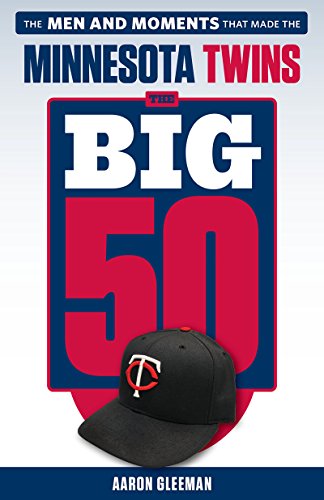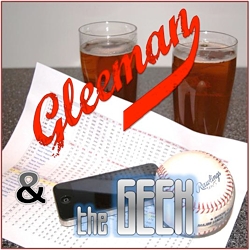February 19, 2009
Top 40 Twins Prospects of 2009: 5, 4, 3, 2, 1
5. Shooter Hunt | Starter | DOB: 8/86 | Throws: Right | Draft: 2008-1
YEAR LV G GS ERA IP H HR SO BB
2008 RK 4 4 0.47 19.0 4 0 34 6
A- 7 7 5.46 31.1 26 2 34 27
Rarely do the Twins target young pitchers with sub par control, but Shooter Hunt's electric stuff was too much to pass up with the 31st overall pick in June's draft. Ranked by Baseball America as the draft's fourth-best pitching prospect, he had a 2.65 ERA, .204 opponent's average, and 230 strikeouts in 200.1 innings at Tulane University and whiffed 68 in 50.1 frames while holding opponents to a .172 mark in his pro debut. However, Hunt struggled to throw strikes once he moved from rookie-ball to Single-A.
After walking 3.8 batters per nine innings at Tulane he handed out 27 free passes over 31.1 innings at Beloit, which led to a bloated 5.46 ERA despite opponents hitting .230 with a .328 slugging percentage. Learning to harness his raw stuff will be the biggest challenge for Hunt, but if the Twins can get him to fit into their strike-throwing mold he has legitimate No. 1 starter potential with a fastball that regularly clocks in at 92-95 miles per hour and a big-breaking curveball. Oh, and a great name.
For an organization that has long been flush with command/control pitchers with middle-of-the-rotation upside Hunt sticks out very much like Matt Garza once did, so hopefully the Twins can avoid becoming similarly frustrated if he's equally slow to change his stripes. Hunt will likely begin this season back at Single-A, but has the potential to move quickly if he can cut the walks and could be a bullpen option by 2010 if there's no room for him yet in the rotation.
4. Angel Morales | Center Field | DOB: 11/89 | Bats: Right | Draft: 2007-3
YEAR LV PA AVG OBP SLG HR XBH BB SO
2007 RK- 143 .256 .357 .405 2 11 12 44
2008 RK 218 .301 .413 .623 15 28 26 72
Ben Revere got most of the attention by flirting with .400 for much of the year, but on a per-game basis Angel Morales was actually the Twins' best minor-league hitter last season. Despite being 18 months younger than Revere and six months younger than 2008 first-round pick Aaron Hicks, Morales batted .301/.413/.623 in 54 games at short-season Elizabethton, leading the rookie-level Appalachian League in homers and slugging percentage.
Morales' numbers are plenty great on their own, but become even better after accounting for the fact that the Appalachian League as a whole hit .262/.331/.387. Slugging .623 in an environment where the average slugging percentage was a measly .387 is equivalent to slugging .670 in an environment with MLB-level offense. Morales' breakout consists of just 218 plate appearances, so there are sample-size issues at play, but an 18-year-old center fielder with an adjusted line of .303/.415/.670 is pretty sick.
Morales has whiffed 116 times in just 92 pro games and striking out in 32 percent of your trips to the plate at rookie-ball is a major red flag, but the 2007 third-round pick has shown a unique combination of power, speed, and plate discipline for someone who will be a teenager for the entire 2009 season. He's a very long way from the big leagues, but few Twins prospects can match Morales in terms of raw potential and he'd get a lot more attention if not for Hicks and Revere being in the same system.
3. Wilson Ramos | Catcher | DOB: 8/87 | Bats: Right | Sign: Venezuela
YEAR LV PA AVG OBP SLG HR XBH BB SO
2006 RK 172 .286 .339 .435 3 16 12 14
2007 A- 316 .291 .345 .438 8 26 19 61
2008 A+ 500 .288 .346 .434 13 38 37 103
Signed out of Venezuela as a 16-year-old in 2004, Wilson Ramos debuted at rookie-ball in 2006, spent 2007 at low Single-A, and played last season at high Single-A, posting eerily similar offensive numbers at each stop. While hitting .290/.345/.435 in three straight seasons doesn't look all that spectacular at first glance, that type of production is outstanding when it comes from a good defensive catcher playing against significantly older competition in pitcher-friendly environments.
He played last season as a 20-year-old at high Single-A, ranking 14th in the Florida State League in OPS. The league's two best OPS totals belonged to a 24-year-old and a 27-year-old, the average age of the 13 guys ahead of Ramos was 23, and only two other catchers were in the top 40. Catching is so physically demanding and driven by defense that major-league backstops were five percent below the MLB average offensively in 2008. For his career Ramos has been 13 percent above average.
He's also no slouch defensively, earning solid reviews for his glovework behind the plate and gunning down 42 percent of steal attempts over the past two years. Ramos strikes out quite a bit and like most players his age has sub par plate discipline, but he's a .288 career hitter who looks capable of 20-plus homers as he matures and is far from disastrous in terms of strike-zone control. Even holding his own as a 21-year-old at Double-A would solidify Ramos as one of baseball's top catching prospects.
2. Ben Revere | Center Field | DOB: 5/88 | Bats: Left | Draft: 2007-1
YEAR LV PA AVG OBP SLG HR XBH BB SO
2007 RK 216 .325 .388 .461 0 16 13 20
2008 A- 374 .379 .433 .497 1 28 27 31
Roundly criticized for taking Revere out of a Kentucky high school with the 28th overall pick in the 2007 draft because most projections pegged him as a third-round talent, the Twins are looking pretty smart so far after the diminutive center fielder led all of minor-league baseball in batting average last year at low Single-A. Revere has hit .360 with 65 steals through 133 pro games, posting a .900 OPS that rates 30 percent above average for his leagues despite a total of one homer in 590 plate appearances.
Revere is 5-foot-9 on a good day and lack of power potential is why he was considered an over-draft in the first round, but he's shown solid gap power with 23 doubles and 20 triples in 531 at-bats. In fact, his .118 Isolated Power last year was exactly average for the Midwest League. Revere's value is always going to come from getting on base and using his speed to swipe bags and track down fly balls, but developing some semblance of power is crucial because he's not going to hit .360 forever.
If he were to hit .300 in the majors with the type of power and plate discipline that he's shown thus far Revere would be at .300/.350/.420, which along with a weak throwing arm would give him upside that resembles Juan Pierre or Lance Johnson. If his power improves enough for Revere to be a 10-homer threat then his ceiling is more along the lines of Johnny Damon or Kenny Lofton. He's been great thus far, but if you're picking nits the components of his performance aren't quite as encouraging long term.
1. Aaron Hicks | Center Field | DOB: 10/89 | Bats: Switch | Draft: 2008-1
YEAR LV PA AVG OBP SLG HR XBH BB SO
2008 RK 204 .318 .409 .491 4 18 28 32
Hicks was a two-way star in high school and most teams liked him more as a pitcher, but prior to the draft he made it clear that he wanted to be a hitter and the Twins selected him as a center fielder with the 14th overall pick. Called "the finest prep outfielder/pitcher prospect in the greater Los Angeles area since Daryl Strawberry in the early 1980s" by Baseball America, Hicks lived up to the hype in his debut by hitting .318/.409/.491 with a dozen steals over 45 games in the rookie-level Gulf Coast League.
Because the GCL is an incredibly pitcher-friendly environment those raw stats actually underrate Hicks' performance, which was the equivalent of hitting .332/.411/.574 in a league with MLB-level scoring. His strong 32-to-28 strikeout-to-walk ratio is also very encouraging, because high-school draftees typically lack patience and drawing walks isn't something the Twins are known for stressing. Hopefully he can follow the Joe Mauer path by bringing a disciplined approach at the plate with him to the organization.
Hicks was considered one of the draft's elite athletes and it would have been tough for his pro debut to go much better, as he displayed every tool at the age of 18. Dominating rookie-ball hardly guarantees big-league success, but Hicks' combination of physical ability and baseball skills is extremely rare for someone so young and long-term ceilings don't climb much higher than a switch-hitting center fielder with a mid-90s fastball, track speed, plate discipline, and an impact bat.

